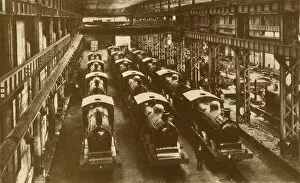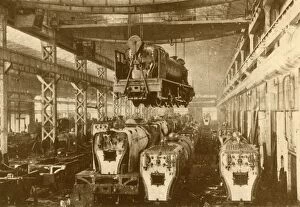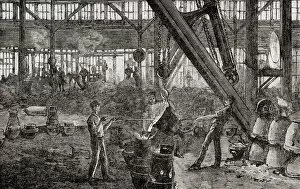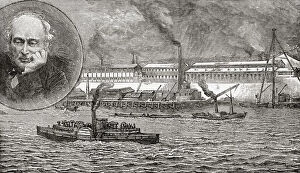William George Armstrong Collection
William George Armstrong was a remarkable English industrialist, inventor, and scientist who left an indelible mark on history
For sale as Licensed Images
Choose your image, Select your licence and Download the media
William George Armstrong was a remarkable English industrialist, inventor, and scientist who left an indelible mark on history. His contributions to various fields are truly awe-inspiring. One of his notable achievements was the launch of the SS Faraday cable laying ship at W G Armstrong and Mitchell Co. This groundbreaking vessel revolutionized communication by enabling the laying of undersea cables across vast distances. Armstrong's brilliance extended to naval warfare as well. The launch party for the cruiser Panther at Elswick shipyard in Newcastle upon Tyne showcased his expertise in constructing formidable warships that would shape naval battles for years to come. Away from the bustling shipyards, Armstrong found solace in capturing picturesque scenes like Bamborough Castle around 1870. His artistic eye allowed him to appreciate beauty beyond engineering marvels. However, it was not just aesthetics that fascinated Armstrong; he also had a passion for firepower. Firing the 111-Ton Gun at Woolwich in June 1887 demonstrated his mastery over artillery technology, showcasing his ability to push boundaries and innovate even in warfare. Armstrong's ingenuity wasn't limited to ships and guns alone; he also dabbled in locomotive design. The image depicting Locomotives Ready for Shipment Overseas highlights his versatility as an engineer with a global impact. In one captivating photograph taken inside an erecting shop around 1930, we catch a glimpse of Armstrong's meticulous attention to detail while overseeing manufacturing processes firsthand—a testament to his hands-on approach towards innovation. Beyond industry and invention, Armstrong cherished nature too. Jesmond Dene, captured circa 1905, showcases his appreciation for serene landscapes amidst bustling urban environments—an oasis created by this extraordinary man himself. A portrait from approximately 1924 immortalizes William George Armstrong himself—a visionary whose genius forever changed our world through countless inventions and advancements across multiple disciplines.













